STORE AUCTIONS ALL SPECIMENS ON SALE MINERALS ACCESSORIES BOOKSTORE RULES REGISTER LOGIN ABOUT US CONTACT US MAILING
SPECIMENS
now available:
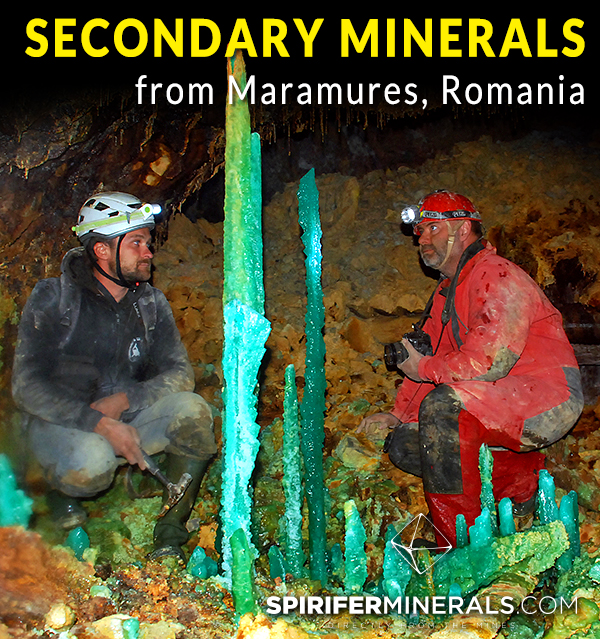
Secondary minerals from old mines in Baia Mare mining area, Maramures, Romania
by Tomasz Praszkier, Paweł Żochowski & Katarzyna Tupik
INTRODUCTION and HISTORY
Mines operating in the Northern Romania, in Maramureș County, around Baia Mare town, for several decades had been considered as Mecca for mineral dealers and collectors. Polymetallic veins mined in the area in the mines such as Turț, Herja, Baia Sprie, Cavnic or Băiuț became classic and famous localities for species such as stibnite, berthierite, tetrahedrite, cronstedtite, vivianite, wolframite etc. When the mines were active they produced thousands of specimens each year. For many years this area had been a destination of regular trips of the Spirifer crew. Unfortunately, in 2005, all mines were permanently closed and left without any maintenance. Leaving them for nature to “reclaim” resulted in formation of spectacular and very interesting secondary mineralization in the abandoned tunnels (the ones that had not been flooded of course). Secondary minerals grow as a result of decomposition of primary polymetallic mineralization, which contained mainly metals such as iron, zinc and copper. These old mines with their fascinating "new" mineralization became the goal of many trips taken by a Spirifer member – Paweł Żochowski and his friends. During these trips many samples have been collected, analyzed, and wide photographic documentation has been done. This report is a compilation of the photos taken on numerous trips in the last 10 years.
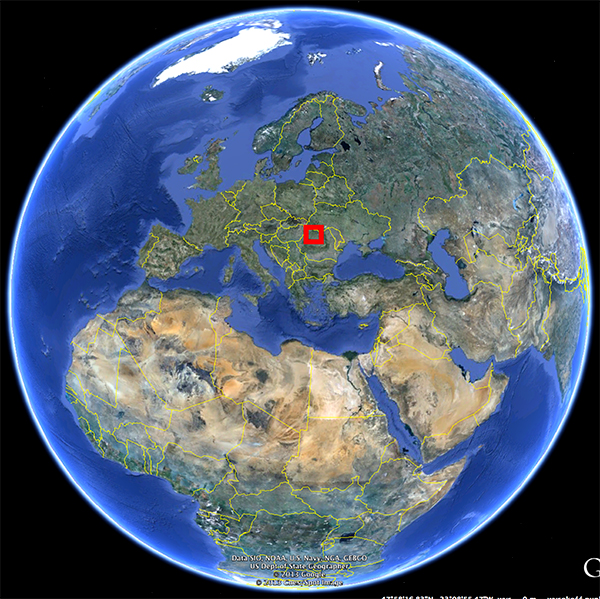
Satellite photo of Earth with Maramures in Romania marked.
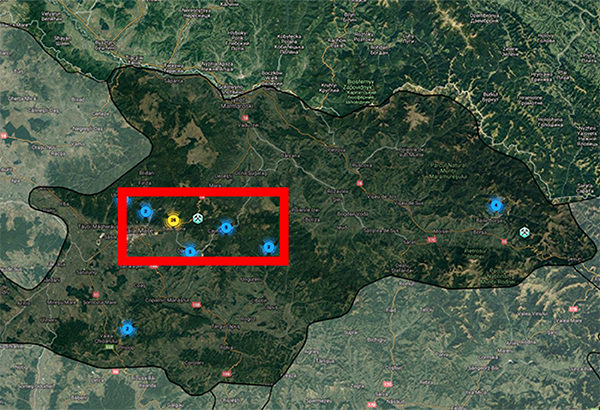
Mindat map showing the mineralogical localities in Maramures.
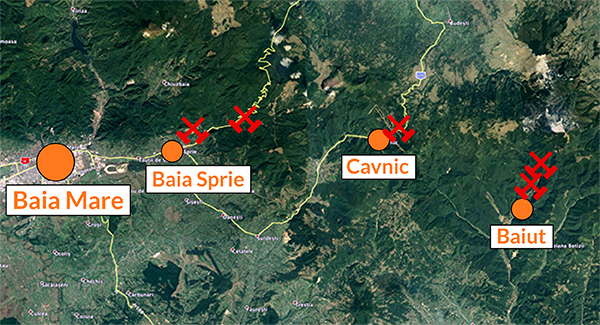
Area between Baia Mare and Baiut with the most important mines described in the article.
2005 – one of the Spirifer crew trips when the mines were still active and minerals easy to obtain. T. Praszkier photo.
2005 – one of the Spirifer crew trips, palinka is an obligatory drink when you negotiate with the miners. T. Praszkier photo.
Moving on to the recent times, entering the Maramures county. P. Żochowski photo.
On the way to Baia Mare. P. Żochowski photo.
Maramureș is a very traditional, not highly developed area, with old-fashioned style transportation, agriculture and architecture. P. Żochowski photo.
Wooden constructions and buildngs are known as a "trademark" of the area. Many of them are historic and built without the use of nails. P. Żochowski photo.
Wooden constructions and buildngs are known as a "trademark" of the area. Many of them are historic and built without the use of nails. P. Żochowski photo.
Wooden constructions and buildngs are known as a "trademark" of the area. Many of them are historic and built without the use of nails. P. Żochowski photo.
Baia Mare Mineralogical Museum
Baia Mare is the biggest town in the area which grew mostly because of the mining and metallurgy activity in the area. One of the "mineralogical" remains of the "good old times" is a museum. Surprisingly it owns a number of very nice specimens showing mineralogical diversity of the region.
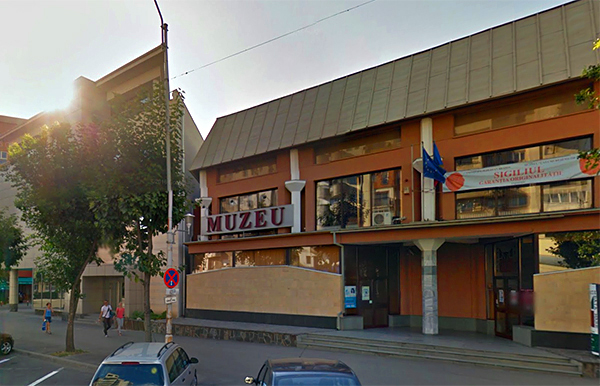
One of very few remains of the mineralogical heritage of the region is the Mineralogical Museum in Baia Mare. The collection presented there gives a good idea about minerals that were found in the area, although there is almost no top quality specimens.
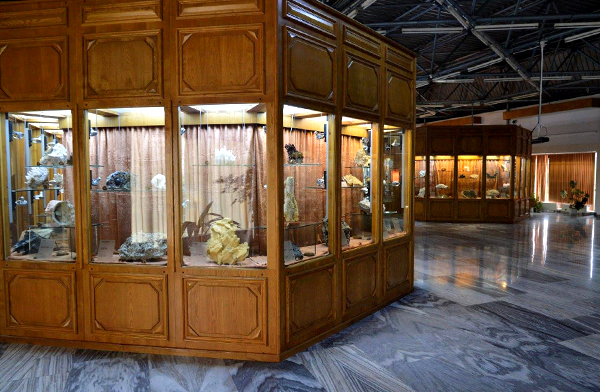
Showcases in the Mineralogical Museum. M. Timko photo.

Block diagrams showing geology of the area in the Mineralogical Museum. P. Żochowski photo.

Barite from Baia Sprie Mine in the Baia Mare Museum. P. Żochowski photo.
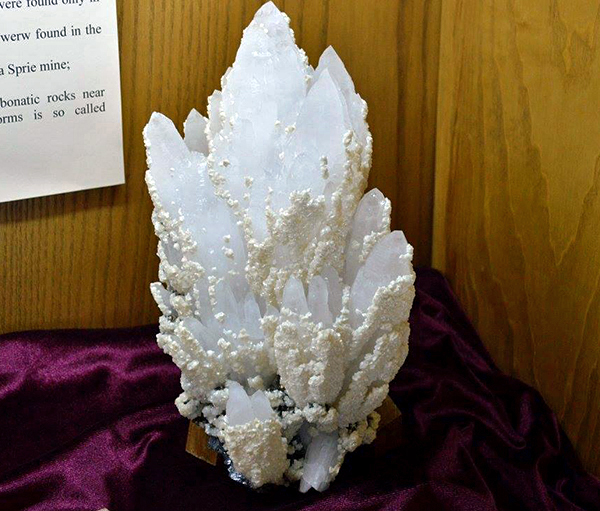
Big quartz specimen in the Baia Mare Museum. M. Timko photo.
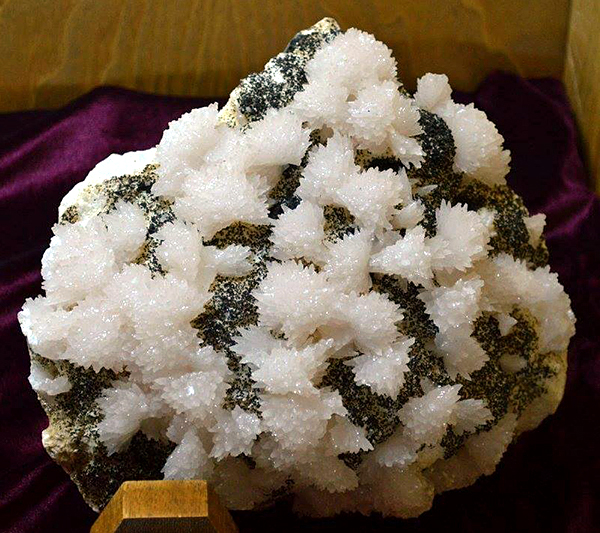
Calcite from Cavnic in the Baia Mare Museum. M. Timko photo.
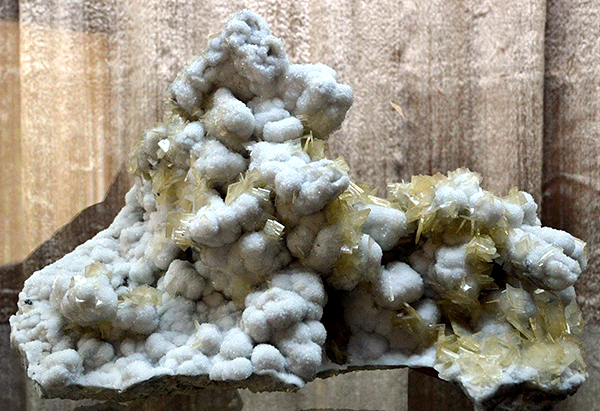
Barite on dolomite in the Baia Mare Museum. M. Timko photo.
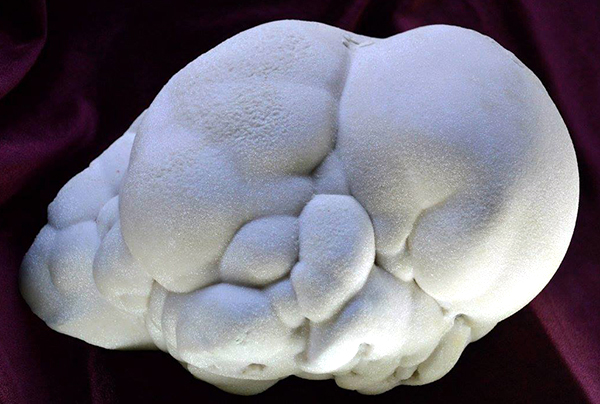
Unusual calcite in the Baia Mare Museum. M. Timko photo.
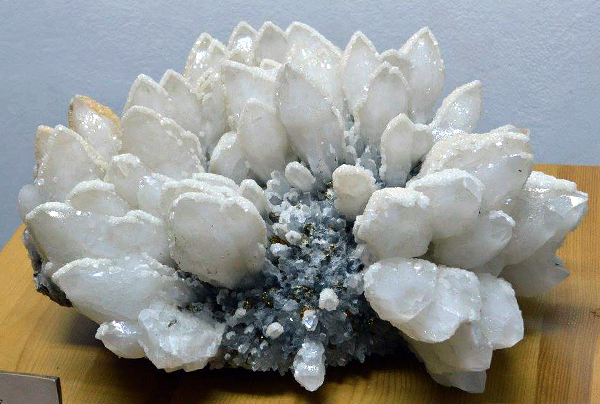
Quartz with sulphides from Cavnic in the Baia Mare Museum. M. Timko photo.
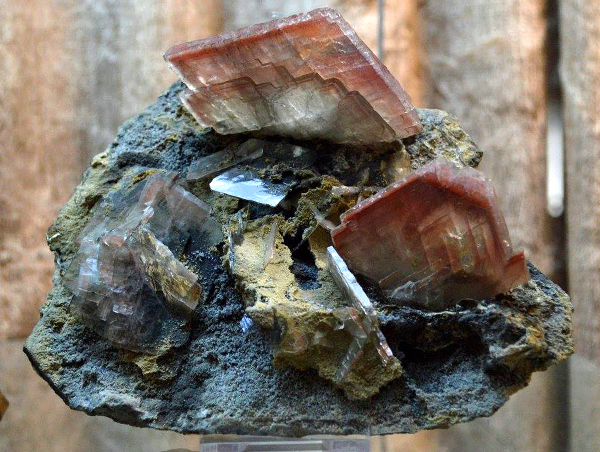
Red barite, colored by the inclusions of realgar, in the Baia Mare Museum. M. Timko photo.

Big gypsum from Cavnic in the Baia Mare Museum. P. Żochowski photo.
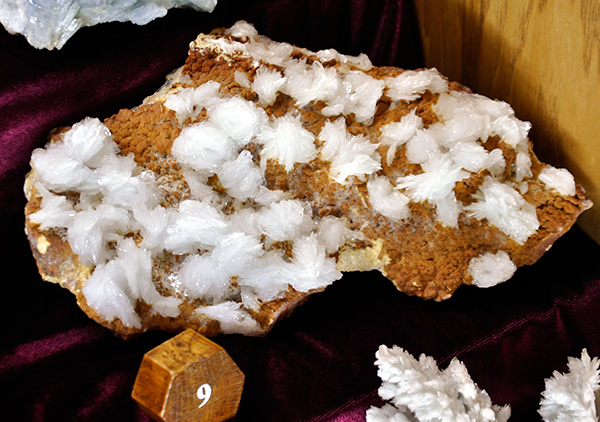
Barite specimen in the Baia Mare Museum. P. Żochowski photo.
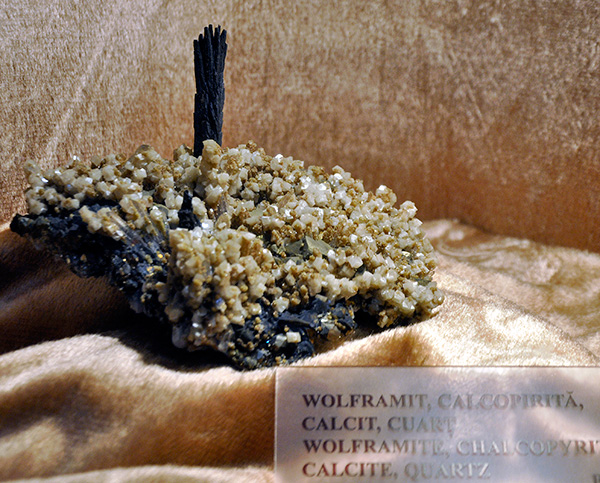
Incredible specimen of wolframite in the Baia Mare Museum. P. Żochowski photo.

Stibnite from Herja Mine in the Baia Mare Museum. P. Żochowski photo.

Stibnite from Baia Sprie Mine in the Baia Mare Museum. P. Żochowski photo.

Stibnite with baryte from Baia Sprie Mine in the Baia Mare Museum. P. Żochowski photo.

Bi-color calcite from Herja Mine in the Baia Mare Museum. P. Żochowski photo.
Baia Sprie area
Baia Sprie area was one of the most important sources of the specimens from Maramureș – especially famous for baryte, stibnite, realgar, scheelite and quartz. Unfortunately today most of the workings are inaccessible. Sector Uno – big open cut continuing down to the system of workings is the only place which is possible to visit today. This zone was worked out in the early days of the mining activity, and visiting there is difficult and quite dangerous.
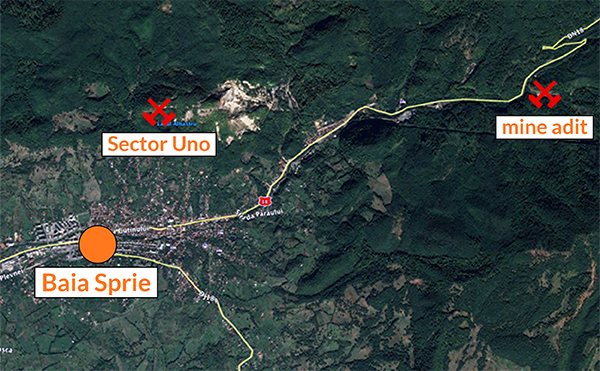
Baia Sprie town with mines in the area.
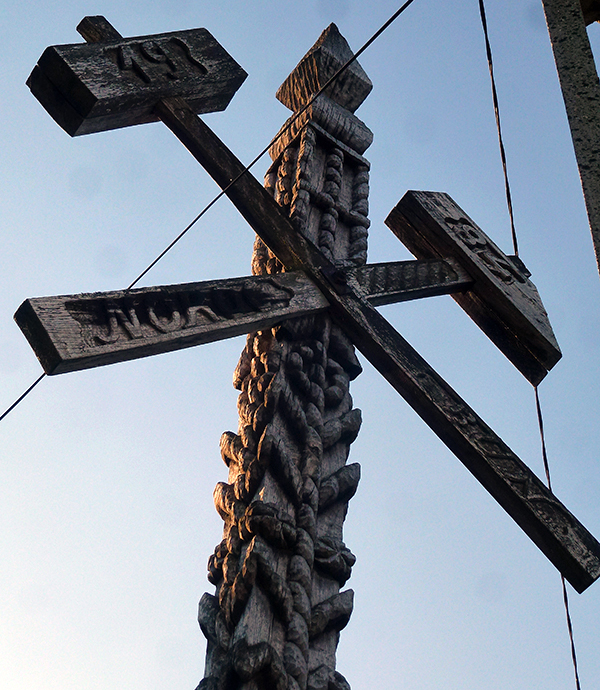
Wooden mining symbols in Baia Sprie, remains of the old times. P. Żochowski photo.

Wooden monument of the miner in the main square of Baia Sprie. P. Żochowski photo.

Communist architecture in Baia Sprie. P. Żochowski photo.

Communist buildings in Baia Sprie, today they fall apart, the living conditions are very poor, residents use small coal stoves for heating in the Winter. P. Żochowski photo.

Baia Sprie town with location of the main Baia Sprie Mine adit, and Sector Uno workings.

Baia Sprie Mine adit leftovers. P. Żochowski photo.
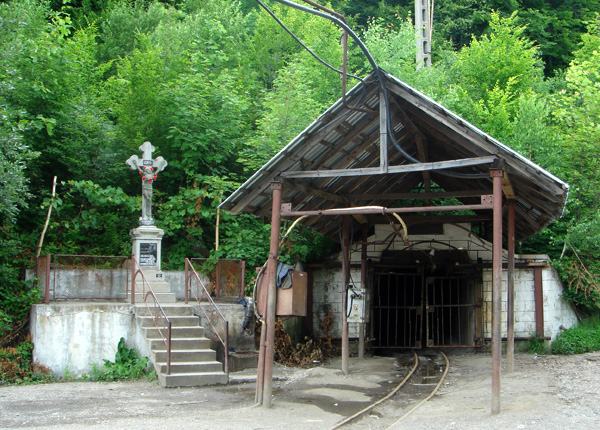
This is how the mine entrance looked like in 2005 ... T. Praszkier photo.

... and this is how it looks like today. P. Żochowski photo.
Preparation for the visit in Sector Uno workings. A lot of equipment is needed. K. Dembicz photo.
Preparation for the visit in Sector Uno workings. A lot of equipment is needed. K. Kołodziejska photo.
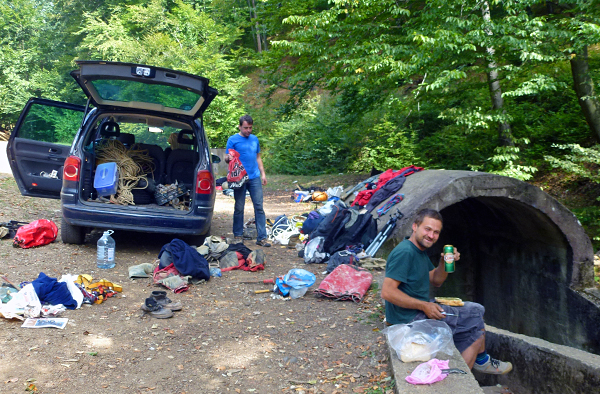
Preparation for visit in Sector Uno workings whats need a lot of equipment. P. Żochowski photo.
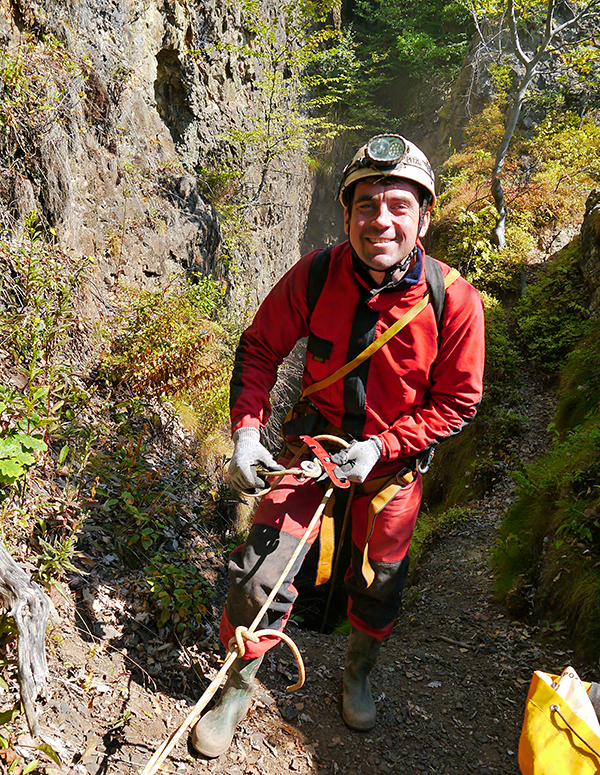
Ready to go down to Sector Uno open cut. P. Żochowski photo.

Going downo to Sector Uno workings. P. Żochowski photo.

Looking up. K. Kołodziejska photo.
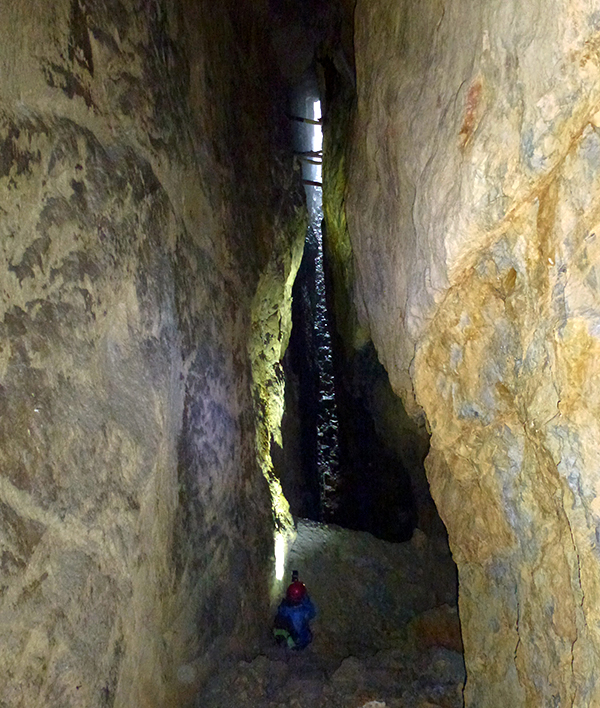
Going downo to Sector Uno workings. P. Żochowski photo.

Going downo to Sector Uno workings. K. Kołodziejska photo.

Going downo to Sector Uno workings. P. Żochowski photo.

Going downo to Sector Uno workings. P. Żochowski photo.

Looking for minerals in old workings. K. Kołodziejska photo.

Remains of the old mining activity in Sector Uno. P. Żochowski photo.

Remains of the old mining activity in Sector Uno. P. Żochowski photo.
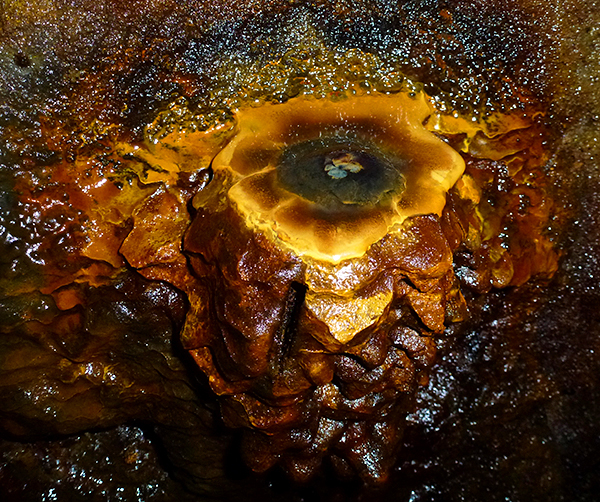
Dripstones rich in Fe oxides forming recently in the old workings. P. Żochowski photo.
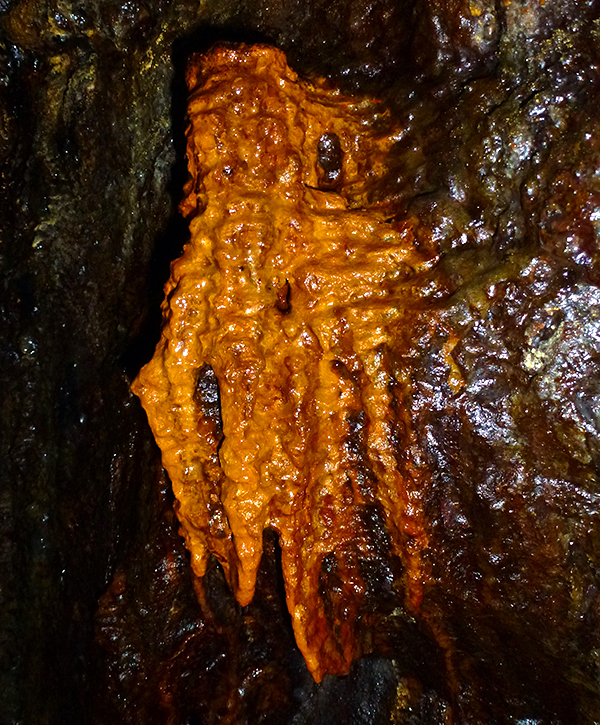
Dripstones rich in Fe oxides forming recently in the old workings. P. Żochowski photo.
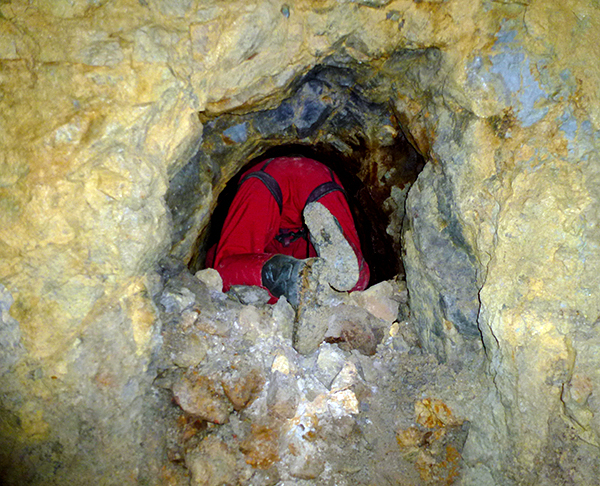
Exploring the old workings in Sector Uno. P. Żochowski photo.
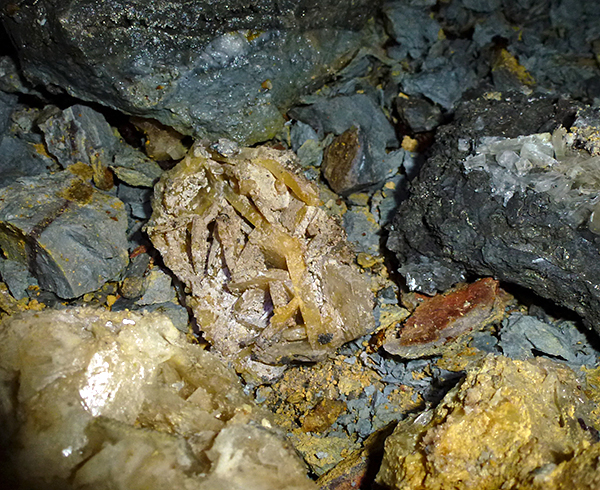
Baryte crystal cluster in the old workings. P. Żochowski photo.

Melanterite stalctites forming recently in the old workings. P. Żochowski photo.

Melanterite stalctites forming recently in the old workings. P. Żochowski photo.

Paweł with melanterite in the old workings of Sector Uno. S. Krupa photo.

Salamander found in the underground workings. S. Krupa photo.

Going up is not the easiest task, especially with backpacks full of rocks. K. Kołodziejska photo.

Going up is not the easiest task, especially with backpacks full of rocks. K. Kołodziejska photo.

Almost back to the top of Sector Uno. K. Kołodziejska photo.

Rest after a hard day underground, note the provisory laundry drying. S. Krupa photo.
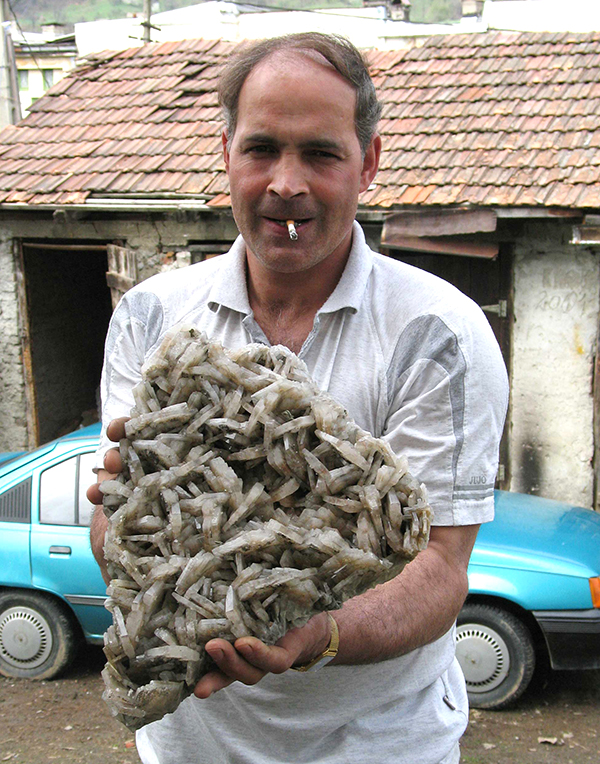
And this is how the barytes found in the mid 2000s in Sector Uno workings looked like, nothing like that is possible to find nowadays. T. Praszkier photo.
Cavnic area
Cavnic mines were the most famous and the most productive in terms of mineral specimens in the times when the mines were active. Every week hundreds of specimens were collected and smuggled out by the miners. Buyers waited every day close to the mine exit to get what was found. Thousands of great specimens of typical asscoations - quartz, dolomite, rhodochrosite and calcite with sulfides (pyrite, galena, chalcopyrite, marcasite, sphalerite etc) as well as very good specimens of gypsum were preserved this way. Unfortunatelly today all the headframes are removed, shafts flooded, and not much of the geology and mineralogy may be seen underound. Only collapsing mine offices and adits to the old galleries still remind of mining activity that stopped here in the 2005.

Location of the Cavnic town.

Sign at the entrance to Cavnic town with a recent geologist. P. Żochowski photo.

Cavnic town is located in a nice montagnais area. P. Żochowski photo.

Old mine buildings in Cavnic. P. Żochowski photo.
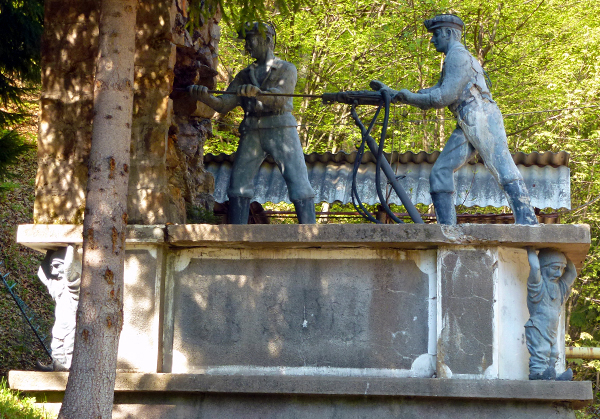
Monument showing miners in work located at the entrance to mining center in Cavnic. P. Żochowski photo.

Exploring the abandoned mining center. K. Kołodziejska photo.

Rescue equipment in the old mine building in Cavnic. S. Krupa photo.

Closed entrance to the famous Boldut mine in Cavnic. P. Żochowski photo.

Old adit in the Cavnic mining area. K. Kołodziejska photo.

Old adit in the Cavnic mining area. K. Kołodziejska photo.

Old adit in the Cavnic mining area. P. Żochowski photo.

Old tunnel in the Cavnic mining area. K. Kołodziejska photo.

Old adit in the Cavnic mining area. K. Kołodziejska photo.

Underground in one of the old galleries in the Cavnic mining area. P. Żochowski photo.
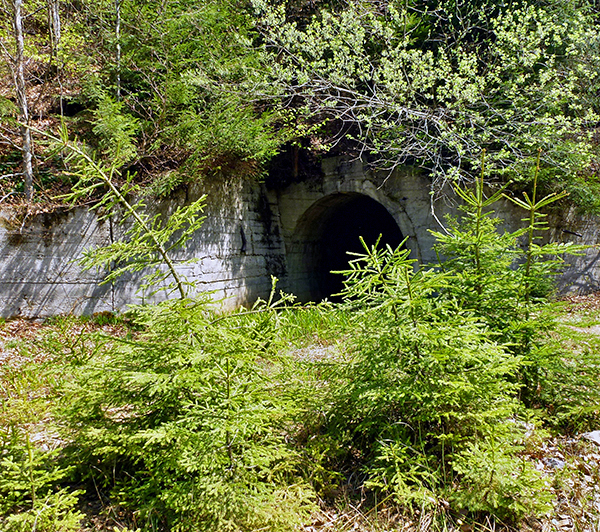
Old adit in the Cavnic mining area. K. Kołodziejska photo.
Baiut mining area - the paradise of the secondary minerals
Although in the time when the mines were active Baiut area was not known for great specimens, beside of short stubby stibnite crystals, today this area is a perfect destination for the mineral enthusiasts. In numerous old underground workings colorful and spectacular secondary minerals have formed. Moreover most of the workings are easily accessible. This area has been the main goal of Sprifer crew`s expeditions in the last years (and yield most of photos in this report as results).

Baiut village is located quite far East from the main mining areas of the region.
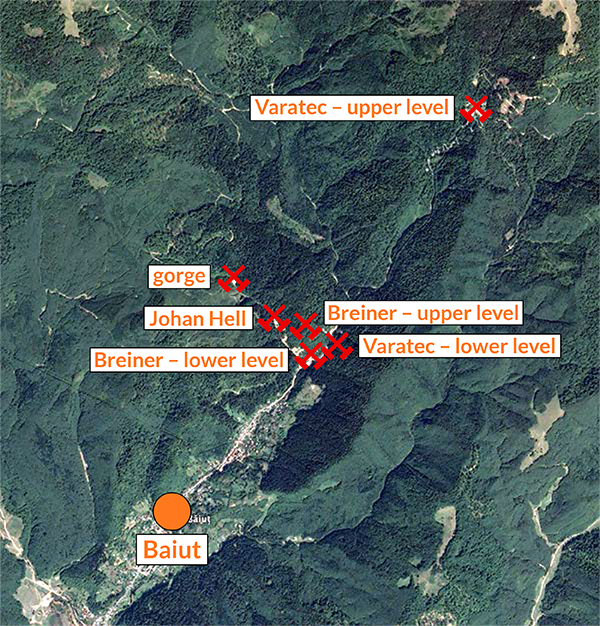
Up in the valley from Baiut village numeorus old workings are still accessible. The ones shown in the map above are described in the article.
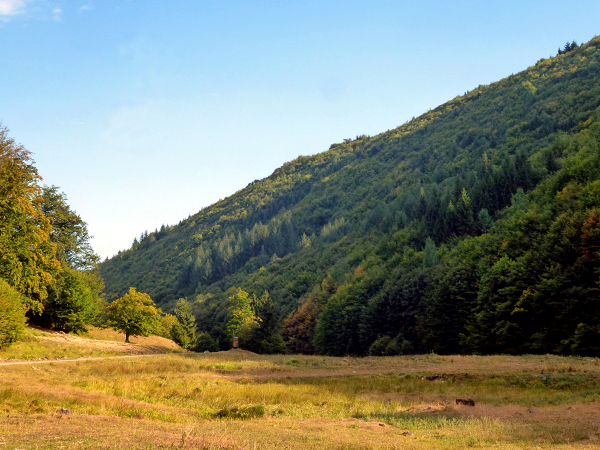
Baiut village is located in very beautiful area of deep valleys surrounded by mountains covered with forest. The area is very primitive, when the mining activity stopped most of the village got abandoned. P. Żochowski photo.
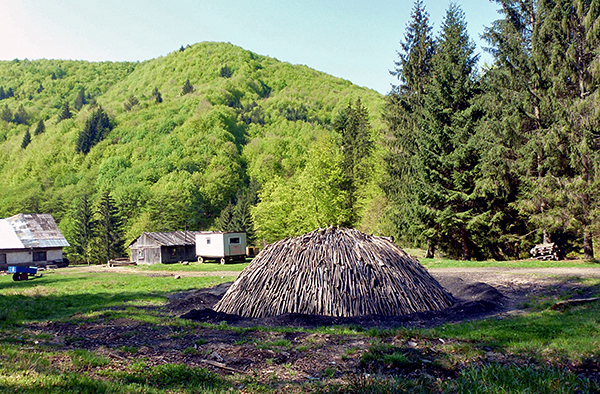
Traditional way of charcoal production, it is not easy to find places like that in Europe. P. Żochowski photo.
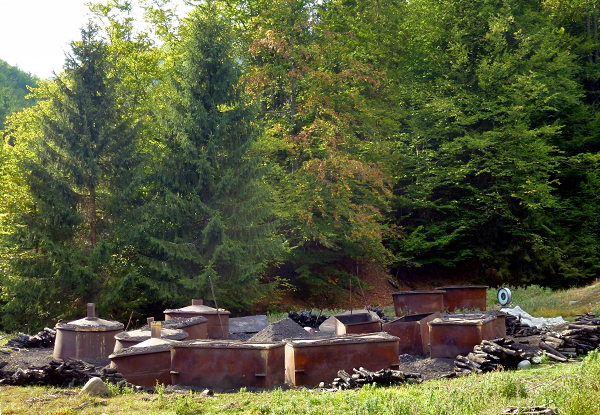
Traditional way of charcoal production, it is not easy to find places like that in Europe. P. Żochowski photo.
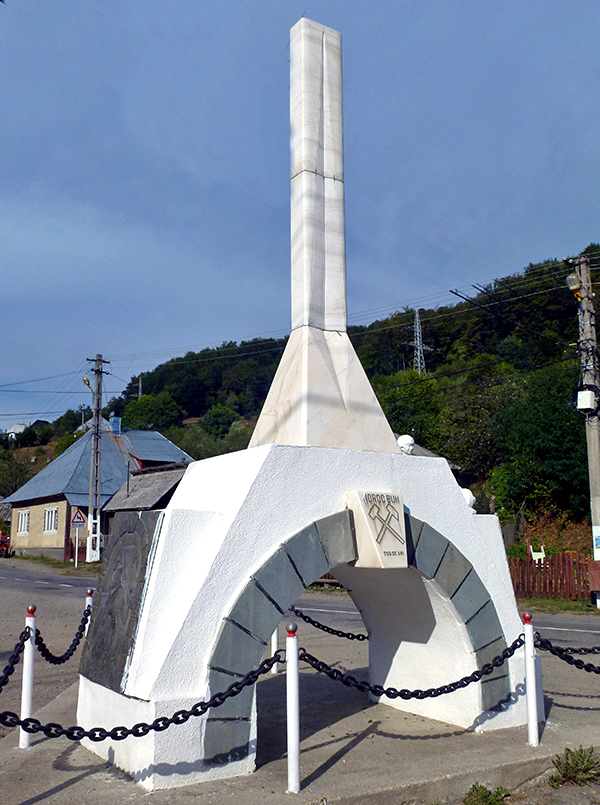
Monument at the entrance to Baiut village with mining symbols. S. Krupa photo.

Baiut village is located in very beautiful area of deep valleys surrounded by mountains covered with forest. The area is very primitive, when the mining activity stopped most of the village got abandoned. P. Żochowski photo.
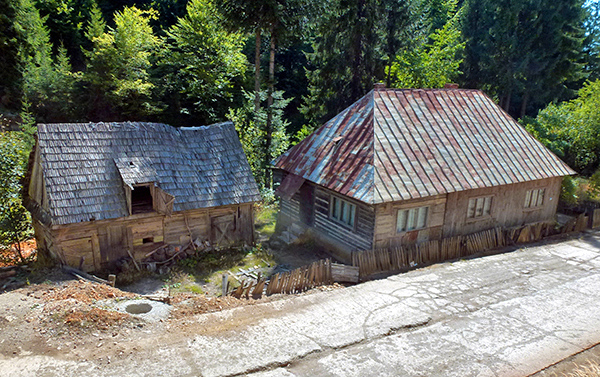
Old wooden buildings in Baiut, today abandoned. K. Litwin photo.
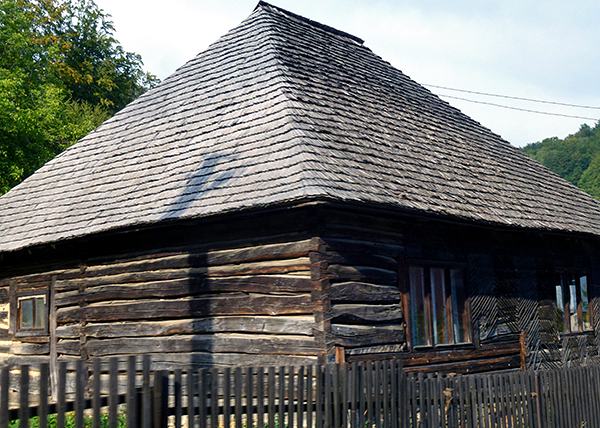
Old wooden building in Baiut, today abandoned. K. Litwin photo.

Old wooden buildings in Baiut, today abandoned. K. Litwin photo.
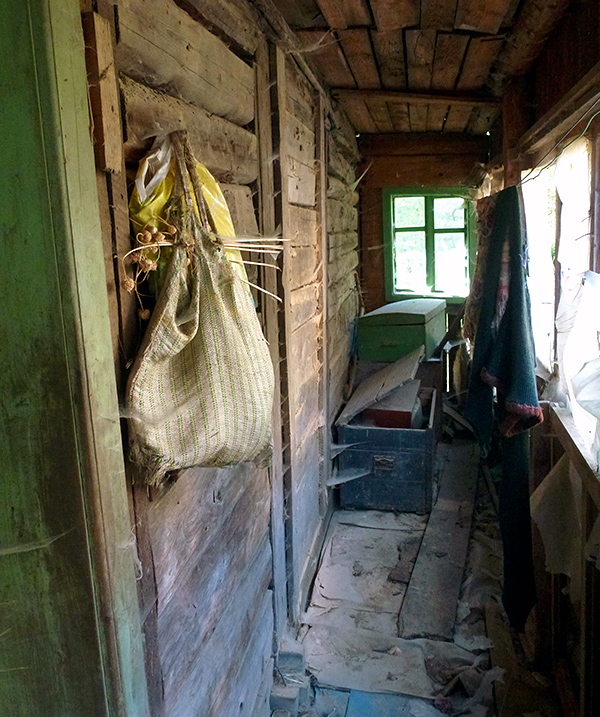
In the abandoned building from the photo above. One can find many interesting items inside... such as... K. Litwin photo.
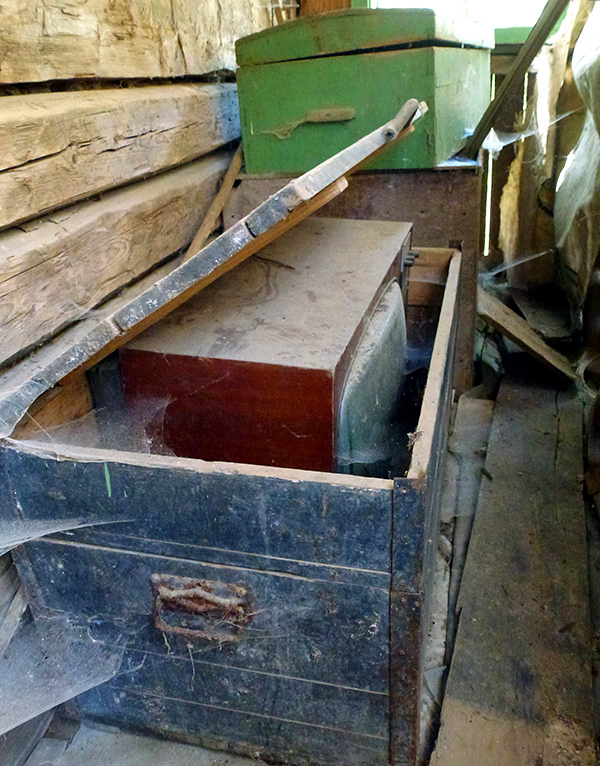
... a very old TV. K. Litwin photo.
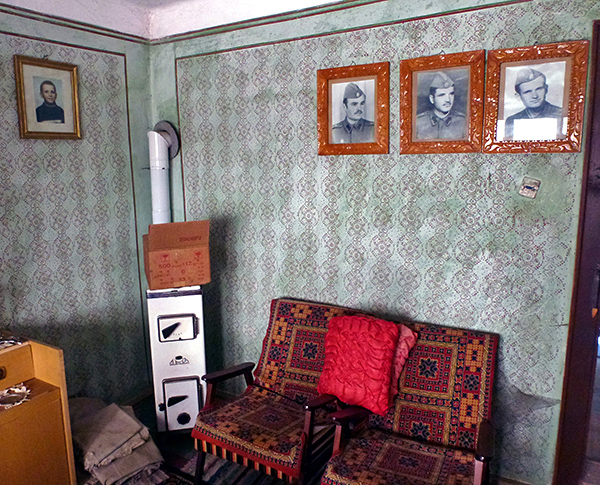
Some of the rooms of abandoned houses look as though somebody just left for work and is going to be back soon. K. Litwin photo.
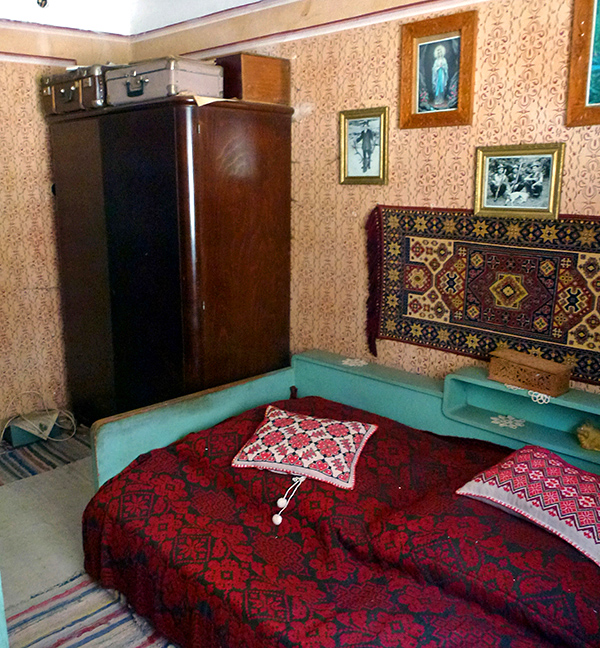
Some of the rooms of abandoned houses look as though somebody just left for work and is going to be back soon. K. Litwin photo.
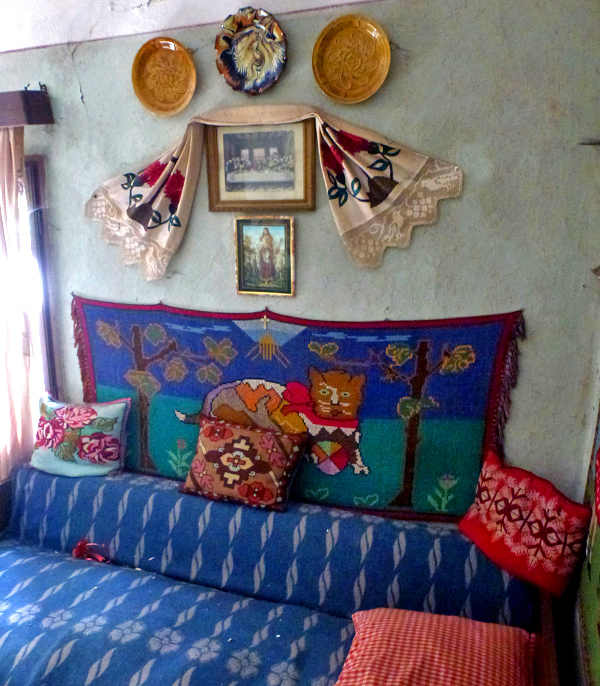
Some of the rooms of abandoned houses look as though somebody just left for work and is going to be back soon. K. Litwin photo.
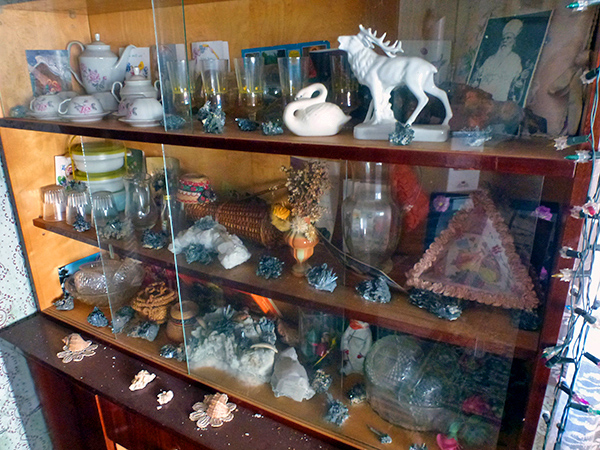
Even the minerals are still there next to some glasses, old photos and other weird objects. This kind of ``exhibitions`` were very popular in the miners` houses. K. Litwin photo.
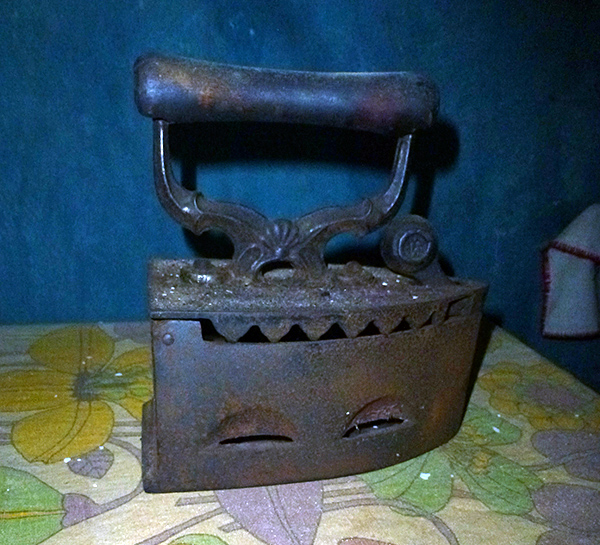
Old box iron in one of the abandoned houses. K. Litwin photo.
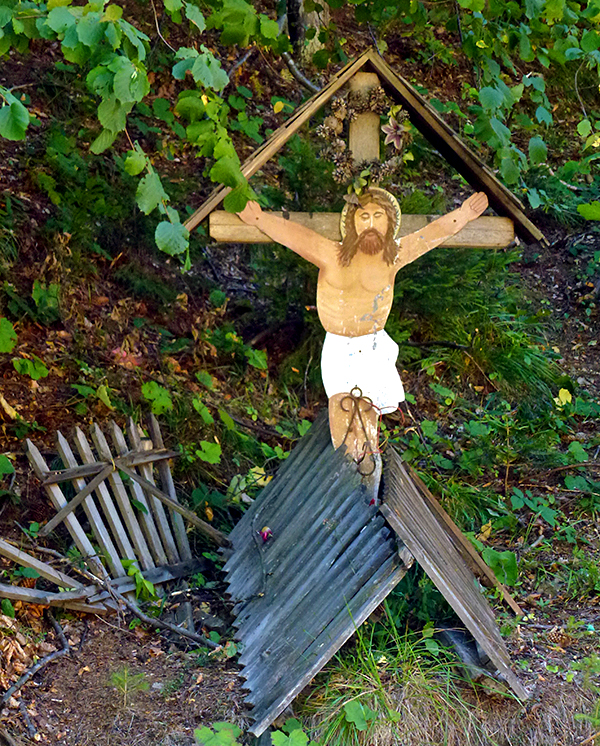
Traditional wayside shrine. P. Żochowski photo.
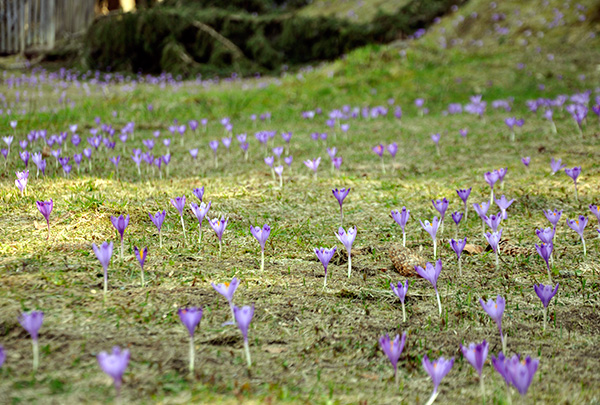
Beautiful flowers. The region is very picturesque. P. Żochowski photo.
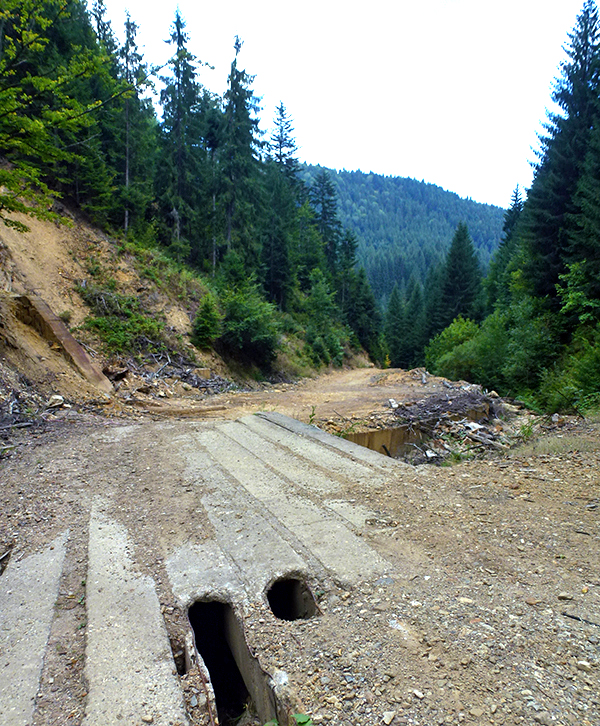
On the way up to the valley mining ramains can be seen all around. P. Żochowski photo.
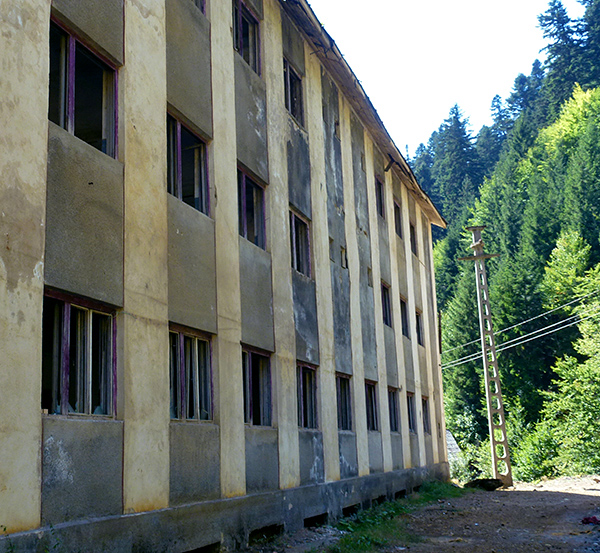
Offices of the Baiut mines are abandoned today. K. Litwin photo.
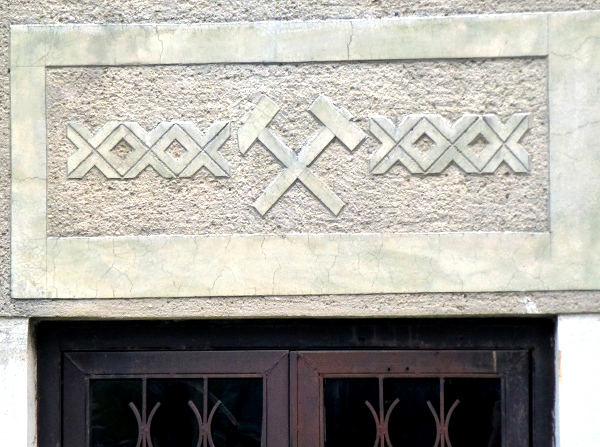
Entrance to the old Baiut mining offices. K. Litwin photo.

In the abandoned Baiut mines offices. K. Litwin photo.
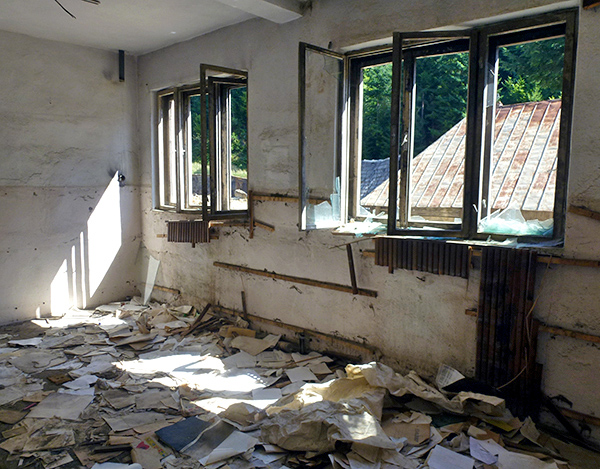
In the abandoned Baiut mines offices. K. Litwin photo.

In the abandoned Baiut mines offices. K. Litwin photo.
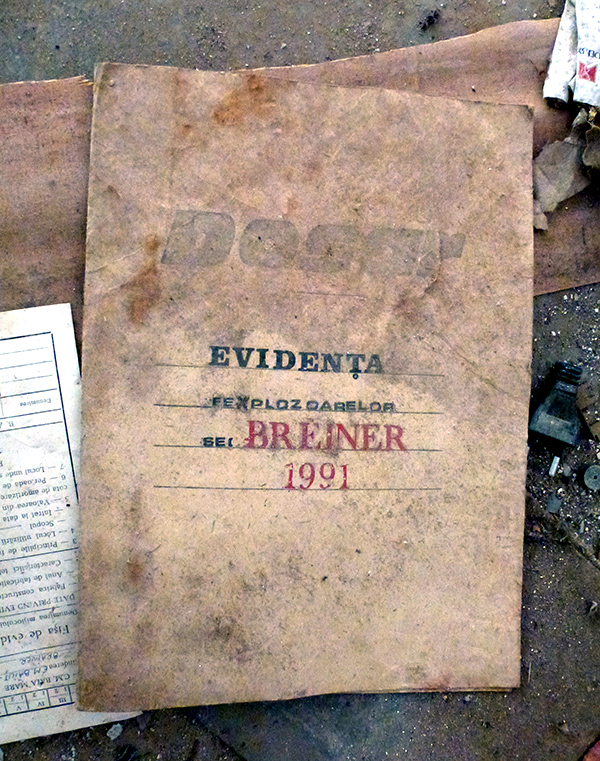
Documenst of the Breiner mine in the abandoned Baiut mines offices. K. Litwin photo.
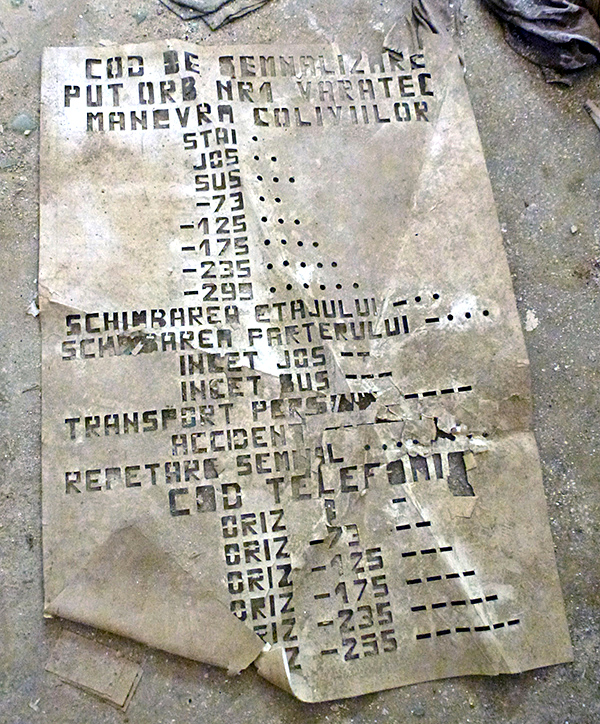
In the abandoned Baiut mines offices. K. Litwin photo.

Old walled in mine adit located near to the main Baiut mines offices. P. Żochowski photo.

Old mine adit located near to the main Baiut mines offices. P. Żochowski photo.

Old mine adits in Baiut area. K. Kołodziejska photo.

There are no hotels in the area, camping is the only option. P. Żochowski photo.
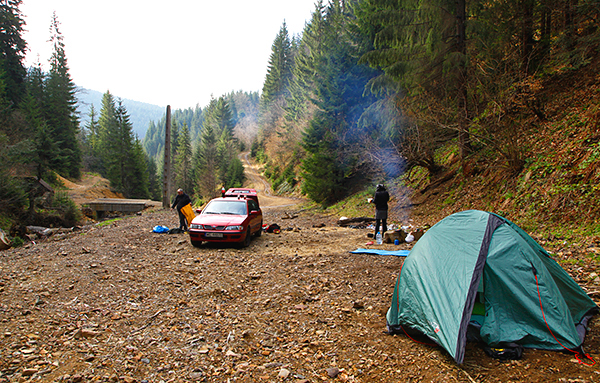
The most interesting mines` adits are located up in the valley in a beautiful forest. There are no hotels in the area, camping is the option of accommodation. K. Trela photo.

The most interesting mines` adits are located up in the valley in a beautiful forest. There are no hotels in the area, camping is the option of accommodation. P. Żochowski photo.
Preparations before going underground. K. Dembicz photo.
"GORGE" is a nickname given by the crew to the area of small steep valley located in one of the side valleys north from Baiut. Workings around there are quite old and small. A few quartz veins with not very exciting mineralisation are may be found.
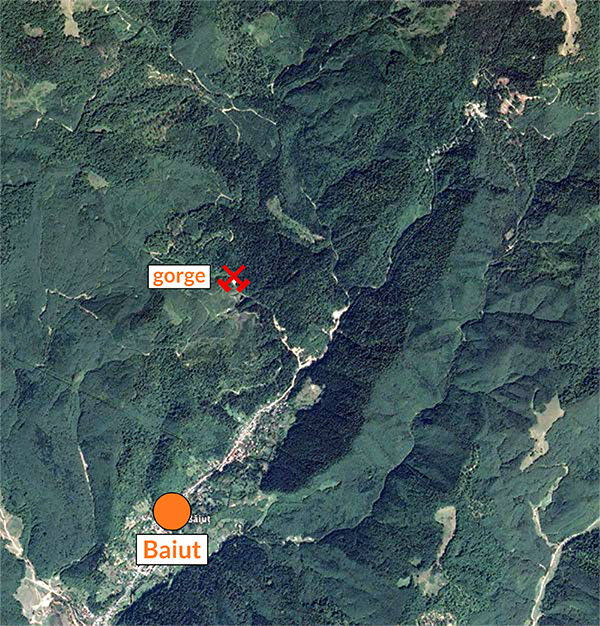
In the area up in the valley from Baiut village there are numerous workings still accessible. Below we will show the most interesting of them, starting our virtual visit from so called "gorge".

So called "gorge" area in Baiut. R. Szczot photo.
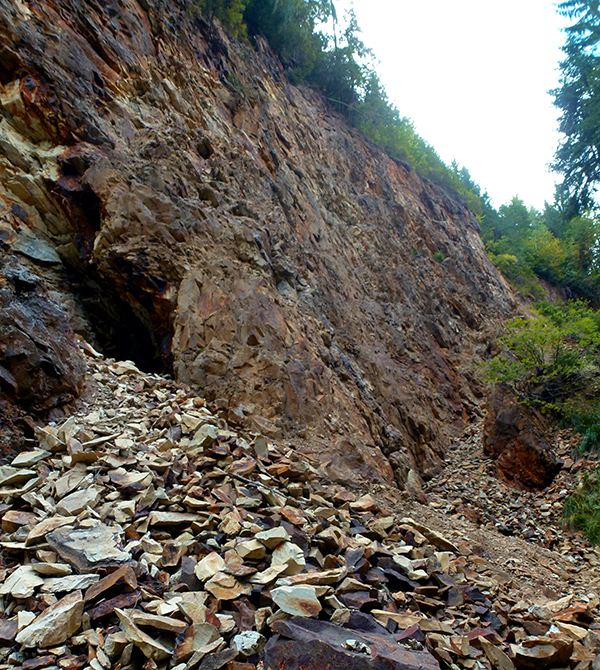
Mining remains in "gorge" area in Baiut. P. Żochowski photo.
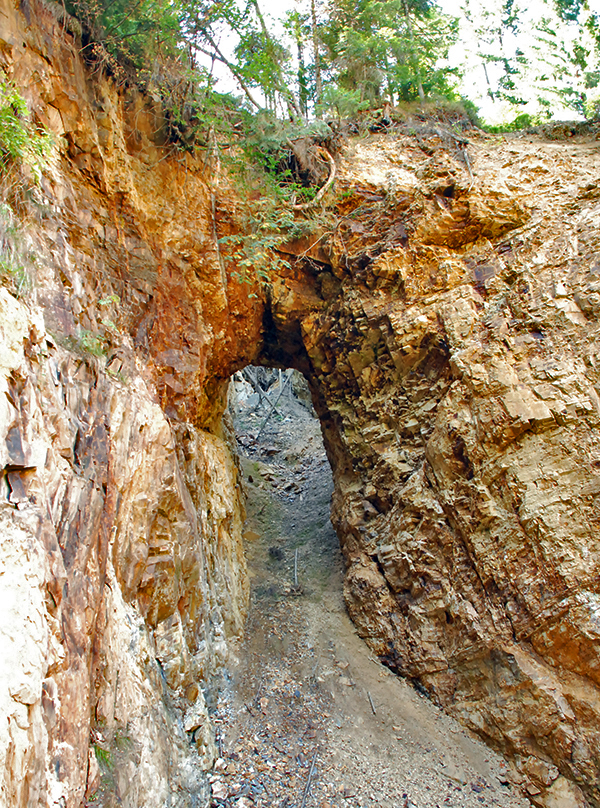
Mining remains in "gorge" area in Baiut. P. Żochowski photo.
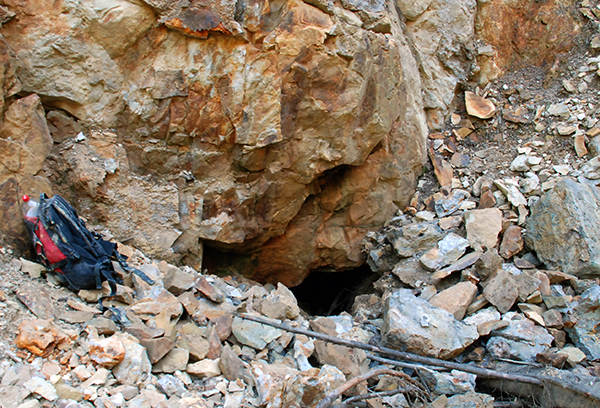
Mining remains in "gorge" area in Baiut. P. Żochowski photo.
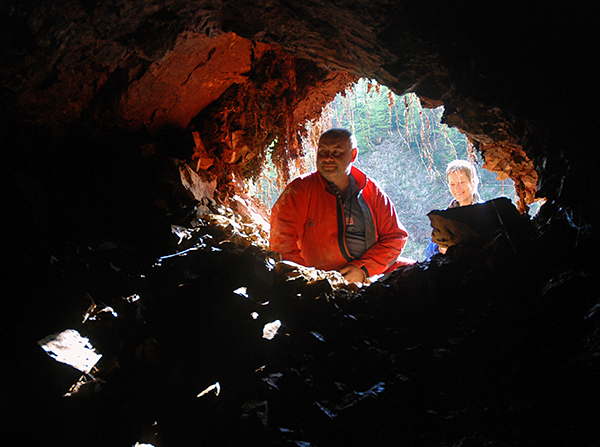
Mining remains in "gorge" area in Baiut. R. Szczot photo.
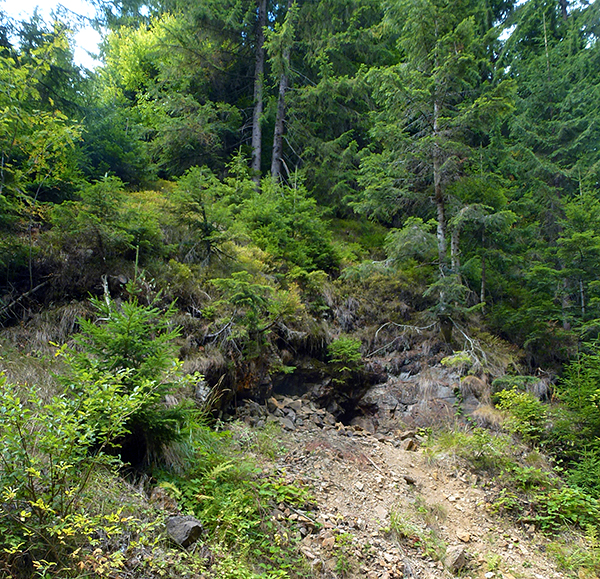
One of the mine entrances still accessible in the "gorge" area in Baiut. R. Szczot photo.

One of the mine entrances still accessible in the "gorge" area in Baiut. Getting ready to go underground. K. Kołodziejska photo.
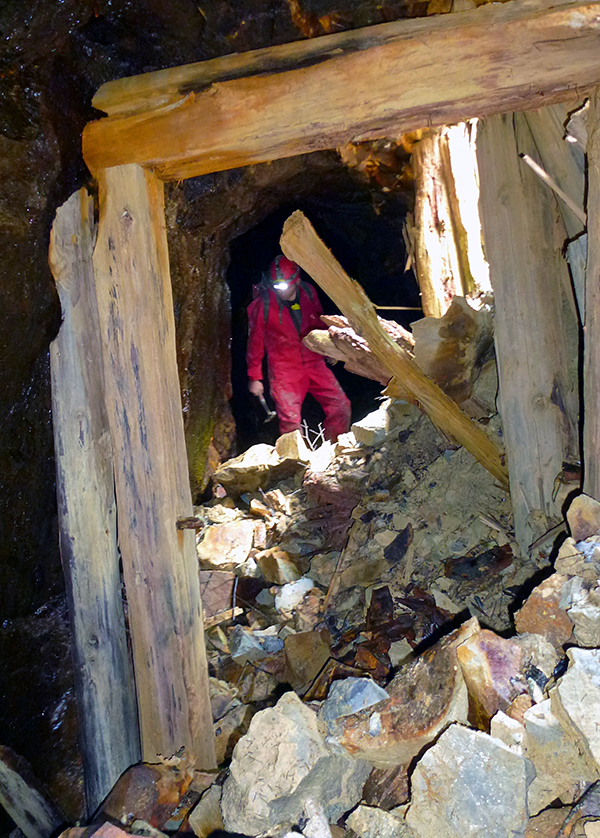
Mining remains in the "gorge" area in Baiut. P. Żochowski photo.

In the old workings in the "gorge" area, Baiut. K. Dembicz photo.
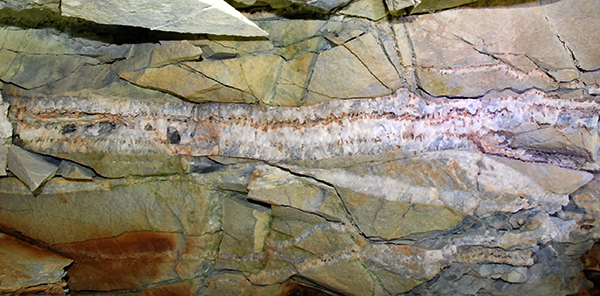
Quartz vein with small pockets in the "gorge" area, Baiut. K. Dembicz photo.
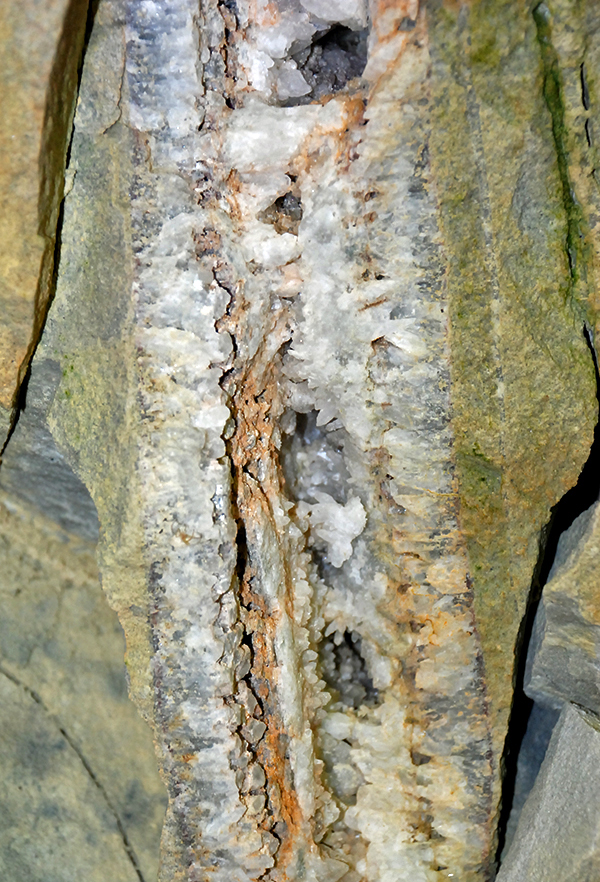
Quartz vein with small pockets in the "gorge" area, Baiut. K. Dembicz photo.
| Comments |
| I was in Romania too. Great minerals, great people. |
| Jacob |
| 2020-05-08 12:54:36 |
| Amazing green minerals |
| Janet |
| 2020-05-08 13:56:45 |
| Wow you guys have some great photos. Very interesting and looks like a great adventure. |
| Dabian |
| 2020-05-13 09:56:57 |
| What should I do to see photos? Because now I see just title of photo |
| Natalia |
| 2020-11-29 18:40:42 |
| i growed up in those areas , thx for this nice pictures. i hope i can return back there someday. |
| paul |
| 2021-02-01 19:29:04 |
| Very nice photo’s, thanks for sharing. |
| Johan |
| 2021-08-17 14:31:37 |
| Here is the definite proof that you have violated the Romanian legislation and entered your private property without the consent of third parties, the mines are the property of the state and you are not allowed to enter them without special approvals. I would like you to present on this site the proof of the necessary approvals if there is such a thing. |
| Ioan |
| 2021-12-07 12:20:49 |
NEW ARTICLES
TRAVELS & ARTICLES
- Pyrite find in Finland
- Mineral notes: New zircons and pyrochlores from Morocco
- Mineral notes: New natrolites from Morocco
- Mineral pottery by Dr. Justyna Domańska-Siuda
- Calcites from Malaysia
- Veszelyites and other minerals from Congo
- Travelling through Arizona & New Mexico, USA
- Halites from the Solno Salt Mine, Poland
- Secondary minerals from Maramureș, Romania
- Calcites from Grabiszyce Quarry, Poland
OUR PUBLICATIONS
- "Fluorites from Taourirt, Morocco" in Mineralogical Almanach
- "Calcites from Grabiszyce, Poland" in LRM 2018
- "Baryte" article in the extraLapis
- MINERALS - The Collectors Newspaper #9
- MINERALS - The Collectors Newspaper #8
- Solno halites article in the Mineralogical Record
- MINERALS - The Collectors Newspaper #7
- MINERALS - The Collectors Newspaper #6
- Mibladen monograph in the Mineralogical Record
- African Secrets book